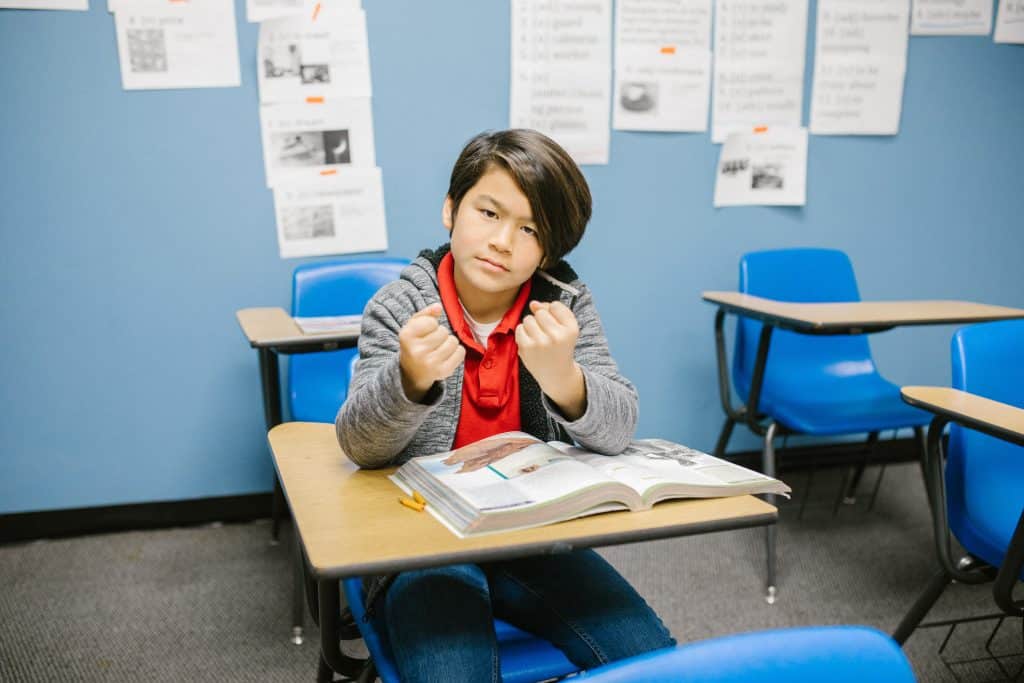Finding out your child is dealing with a bully can be heart-wrenching. How do we arm our children with the tools to navigate these challenging situations? We have put together a comprehensive guide that will provide a step-by-step approach on how to deal with a bully. Be sure to engage your kids with our Goal Mine video class, a great learning tool to reinforce the lessons in this blog post.
Table of Contents
| Steps | Description |
|---|---|
| Step 1: Develop Awareness | Teach kids to identify signs of bullying. |
| Step 2: Encourage Open Communication | Foster a safe environment for kids to express their experiences. |
| Step 3: Teach Assertiveness | Equip kids with the ability to stand up for themselves without aggression. |
| Step 4: Promote Compassion and Understanding | Foster understanding that bullies often deal with own struggles. |
| Step 5: Involve School Authorities | Work collaboratively with school for systemic change. |
| Step 6: Utilize Professional Help | Consider professional help in severe bullying situations. |
| Step 7: Foster Positive Self-Image | Encourage confidence and resilience in kids. |
| Step 8: Encourage Healthy Peer Relationships | Promote friendships based on shared interests, respect, and kindness. |
Step 1: Develop Awareness
Awareness is the key to resolving bullying issues. The first critical step is teaching your kids to identify the signs of bullying. Some signs may include noticeable changes in behavior, frequent illnesses to avoid school, and anxiety about social situations. Once recognized, it becomes easier for your kids to understand what they are dealing with.
Step 2: Encourage Open Communication
Next, foster an environment of open communication. When kids feel comfortable sharing their experiences, they are more likely to disclose bullying incidents. Maintain calm and supportive reactions to encourage your child to speak up.
Step 3: Teach Assertiveness
Thirdly, one powerful defense against bullying is assertiveness. Teach your kids how to stand up for themselves in an assertive but non-aggressive manner. Role-play scenarios can be an essential tool in honing this skill.
Step 4: Promote Compassion and Understanding
On the other hand, understanding the bully’s perspective is not about justifying their actions. It is about showing kids that bullies are often dealing with their own struggles. This understanding can disarm the power a bully might hold.

Read more: Child Doesn't Want to Go to School
Step 5: Involve School Authorities
Moreover, never hesitate to involve school authorities when necessary. A collaborative approach involving parents, teachers, and school counselors can instigate change at a systemic level, promoting a safer and more harmonious environment for your kids.
Step 6: Utilize Professional Help
Certainly, in situations where bullying becomes severe, professional help may be necessary. Therapists and psychologists have the tools to help your child navigate their emotions and develop resilience.
Step 7: Foster Positive Self-Image
Similarly, fostering a positive self-image in your kids can also equip them to deal with bullies. After all, children who are confident in their worth are less likely to be affected by negative comments or actions by others.
Step 8: Encourage Healthy Peer Relationships
Most importantly, promoting healthy peer relationships can give your child the social support required to stand up to bullies. Encourage kids to develop friendships based on shared interests, respect, and kindness.
SPONSORED BY: Goally
Goally’s Kid’s Tablet has one of the largest libraries of skill-building videos (like “How to Share” and “What To Do When You’re Lost”) in the Goal Mine app.👇
To sum up, dealing with a bully involves a multicentric approach, from recognizing the signs to building resilience. Each step offers new skills and understanding for both parents and kids. Remember that you’re not alone in this journey. Navigate the challenges with our Goal Mine class video that covers the first step in depth. For further assistance, consider investing in Goally’s dedicated Tablet; it follows the same step-by-step approach and offers a comprehensive set of video lessons that teach your child how to tackle bullying head-on. It might just be the confidence boost they need!
Frequently Asked Questions About How to Deal With a Bully
1. How can Goally help my child learn how to deal with a bully?
Goally offers comprehensive video lessons targeted at teaching children how to handle bullying effectively and confidently.
2. What strategies does Goally teach a kid to confront a bully?
Goally breaks down the process into easy, understandable lessons that teach confidence building, assertive communication, and conflict resolution skills.
3. How effective is role-play in teaching kids how to deal with bullies?
Role-play is highly effective in equipping children with the right responses and emotional control when handling bullies.
4. Can teaching assertiveness help my child deal with a bully?
Yes, teaching assertiveness is pivotal in equipping your child with the right tools to respond to bullying situations confidently and safely.
5. How can my child practice dealing with bullies using Goally?
Through Goally's video lessons, kids can practice and master the techniques at their own pace, making them proficient in tackling real-life bullying situations.
Goally
We help parents teach their kids life skills, like doing bedtime and morning independently. Backed by science, we incorporate evidence-based practices and expert-informed designs in all of our apps and content.







